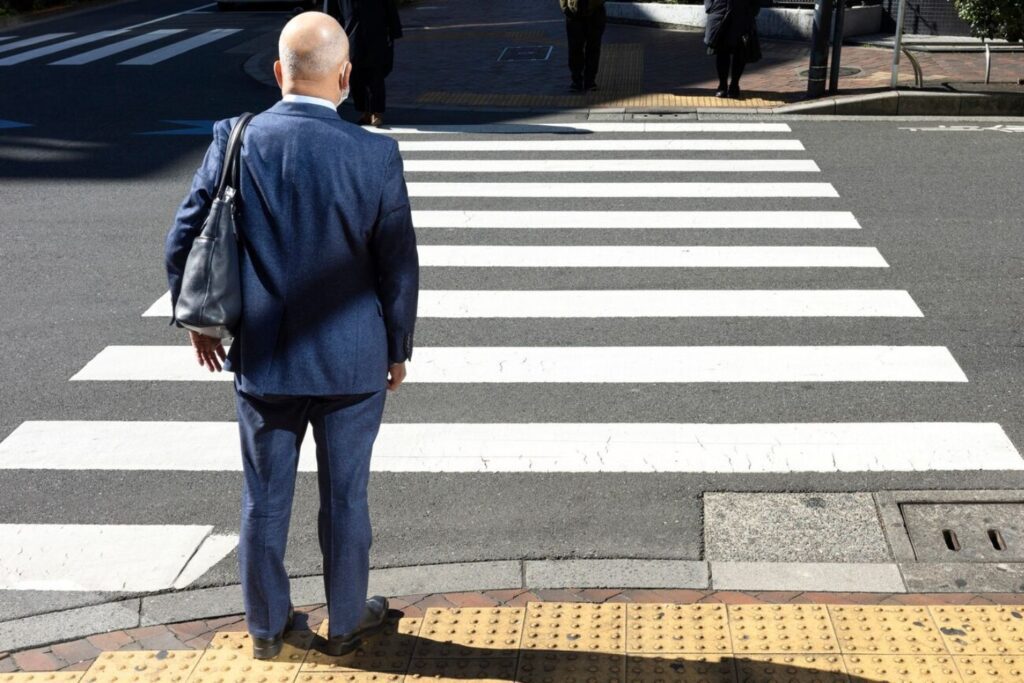Walking around the streets of California is a nice way to get around, especially if you’re new to the area. But its safety is not oh-so-good. In 2021, a total of 1,108 pedestrian fatalities were recorded. Data shows that California is ranked 3rd as the deadliest street for pedestrians due to its high number of pedestrian fatalities. If you’re a pedestrian in California, it’s important to understand the state’s crosswalk laws. These laws dictate when and where pedestrians can legally walk in public, as well as the responsibilities of drivers when it comes to yielding the right-of-way to pedestrians. Knowing these laws can help you stay safe while walking and avoid accidents.
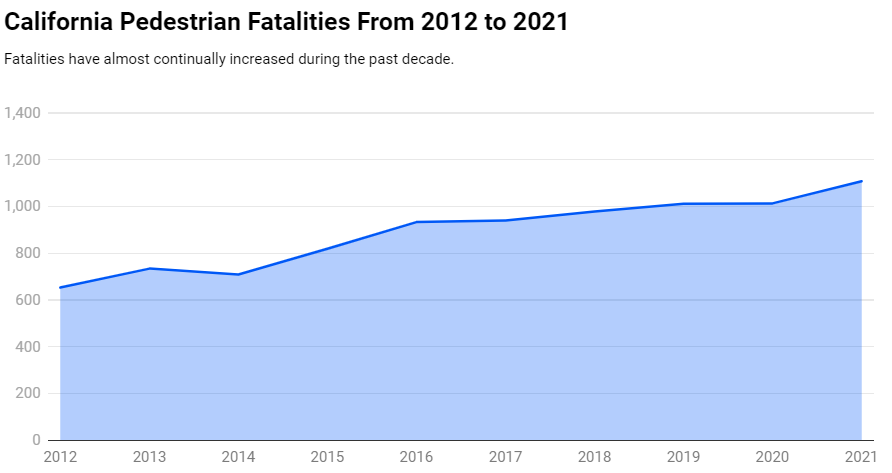

In California, motorists must yield the right-of-way to pedestrians crossing the road within any marked or unmarked crosswalk. This means that if you’re walking within a crosswalk, you have the right-of-way, and drivers must stop to let you cross. However, it’s important to note that pedestrians must also take due care for their own safety. You cannot jump into traffic in a way that creates an immediate hazard, and you cannot unnecessarily delay traffic.
Chapter 5 of the California Vehicle Code covers various laws and regulations regarding the rights and responsibilities of pedestrians on roadways.
- Right-of-Way at Crosswalks (CVC § 21950): Pedestrians have the right-of-way when crossing the road within marked or unmarked crosswalks at intersections. Drivers are required to yield to pedestrians in crosswalks.
- Duties of Pedestrians (CVC § 21954): Pedestrians also have responsibilities to ensure their safety and the safety of others. They must not suddenly step into the path of a vehicle that is close enough to constitute an immediate hazard. Additionally, they should avoid unnecessarily stopping or delaying traffic while crossing the street.
- Pedestrian Signals (CVC § 21456): Pedestrians must obey pedestrian traffic signals at intersections equipped with them. They should wait for the signal to indicate it is safe to cross.
- Pedestrians Outside of Crosswalks (CVC § 21954): When crossing the street at a location other than within a marked or unmarked crosswalk at an intersection, pedestrians should yield the right-of-way to vehicles on the roadway.
- Special Considerations (CVC § 21950): In certain situations, such as school zones, drivers must exercise extra caution and stop pedestrians crossing in crosswalks. Failure to do so can result in fines and penalties.
Penalties for Violation: Violating pedestrian laws can result in fines and points on a driver’s license. The specific fines vary depending on the violation, such as failing to yield to a pedestrian or injuring a pedestrian.
Definition of Crosswalks
As a pedestrian in California, it is important to understand what a crosswalk is. A crosswalk is a designated area on the road that is intended for pedestrians to cross safely. Crosswalks can be marked or unmarked, and they can be located at intersections or mid-block.
Marked Crosswalks
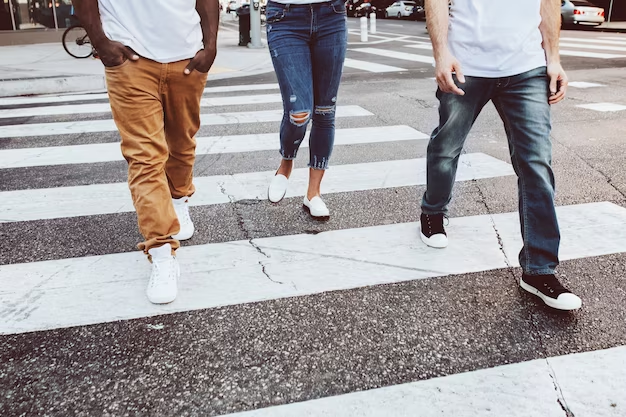

Painted lines on the road designate marked crosswalks, and crosswalk signs or signals often accompany them. These crosswalks are typically located at intersections, but they can also be found mid-block. When pedestrians are crossing at a marked crosswalk, they have the right-of-way, and drivers are required to stop and yield to them.
Unmarked Crosswalks
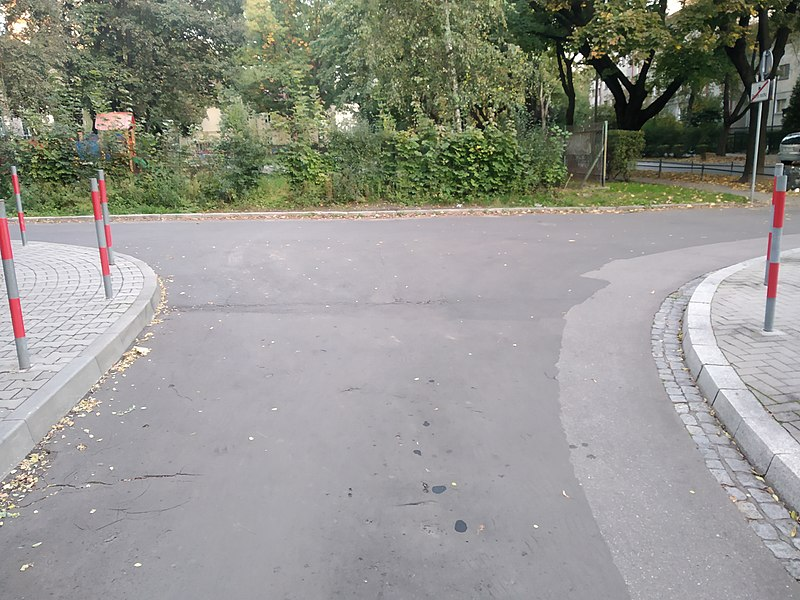

Painted lines do not designate unmarked crosswalks, but they are still considered crosswalks under California law. Unmarked crosswalks are typically located at intersections, and the presence of curbs, sidewalks, or other pedestrian facilities indicates them. When pedestrians are crossing at an unmarked crosswalk, they still have the right-of-way, and drivers must stop and yield to them.
It is important to note that pedestrians must still follow traffic laws when crossing at a crosswalk. This includes obeying traffic signals and signs, as well as using caution when crossing the road. Additionally, drivers must exercise caution when approaching and crossing through a crosswalk and yield to pedestrians crossing the road.
Pedestrian Rights and Responsibilities
As a pedestrian in California, you have certain rights and responsibilities when crossing the street. Understanding these rules can help keep you safe and avoid accidents.
Right of Way at Crosswalks
According to Cal. Veh. Code § 21955, pedestrians have the right of way at crosswalks, whether they are marked or unmarked. This means that drivers must yield to pedestrians who are crossing the street. If you are crossing the street at a crosswalk, look both ways before stepping off the curb.
Pedestrian Obligations
While pedestrians have the right of way at crosswalks, they also have certain obligations to ensure their safety and the safety of others. The Cal. Veh. Code § 21954 states that pedestrians must not suddenly leave a curb and enter the path of a moving vehicle that is close enough to constitute an immediate hazard. Additionally, pedestrians must not unnecessarily stop or delay traffic while crossing the street.
Signals and Traffic Control Devices
Cal. Veh. Code § 21456 ensues that pedestrians must obey traffic signals and control devices, such as traffic lights and crosswalk signals. If a pedestrian signal is present, you must wait for the signal to indicate that it is safe to cross. If there is no pedestrian signal, follow the traffic signal for vehicles. If there is no traffic signal, make sure to look both ways before crossing the street.
Driver Obligations
As a driver in California, you have certain legal obligations regarding crosswalks and pedestrians. Failure to adhere to these obligations can result in fines, points on your driver’s license, and even criminal charges in serious cases. This section will outline your obligations as a driver regarding crosswalks and pedestrians.
Stopping for Pedestrians
California law requires that drivers stop for pedestrians crossing the road in a marked or unmarked crosswalk. You must yield the right-of-way to the pedestrian and allow them to cross the road safely. This means that you must come to a complete stop and wait for the pedestrian to cross the road before proceeding. It is important to note that the pedestrian does not have to be in the crosswalk for you to be required to stop. If a pedestrian is crossing the road in your path, you must stop and allow them to cross safely.
Passing at Crosswalks
When approaching a crosswalk, you must exercise caution and be prepared to stop. If a pedestrian is in the crosswalk, you must stop and allow them to cross safely. However, if there are no pedestrians in the crosswalk, you may proceed with caution. It is important to note that you must not pass another vehicle that has stopped at a crosswalk. Doing so puts pedestrians at risk and is a violation of California law.
School Zone Crosswalks
In school zones, drivers must exercise extra caution when approaching crosswalks. California law, specifically California Vehicle Code § 21950, requires drivers to stop pedestrians crossing the road in a marked or unmarked crosswalk in a school zone. This means that you must come to a complete stop and wait for the pedestrian to cross the road before proceeding. It is important to note that school zone crosswalks are often marked with flashing lights and/or signs indicating that you must stop for pedestrians. Failure to stop pedestrians in a school zone can increase fines and penalties.
Remember, as a driver, you are legally obligated to stop pedestrians in crosswalks. Always exercise caution when approaching a crosswalk, and be prepared to stop. By following these guidelines, you can help keep pedestrians safe and avoid fines and penalties.
Types of Crosswalks
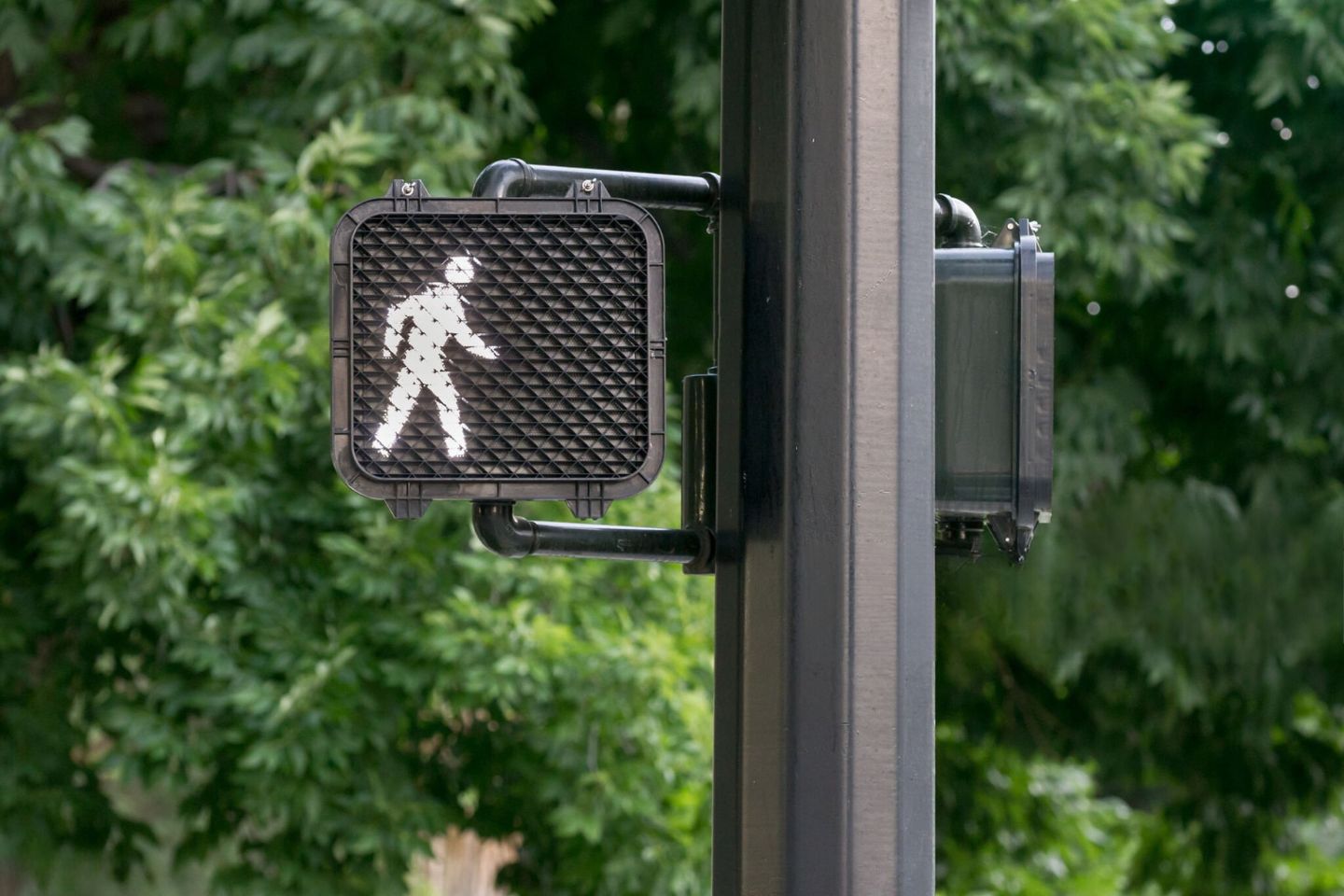

In California, there are two types of crosswalks: marked and unmarked.
Marked Crosswalks
Marked crosswalks are designated by painted lines on the road that indicate where pedestrians should cross. According to the California Vehicle Code (CVC) §21950, drivers are required to yield the right-of-way to pedestrians crossing the roadway in any marked crosswalk at an intersection.
Pedestrians have the right-of-way in marked crosswalks, which means that drivers must stop and allow them to cross. It’s important to note that not all marked crosswalks have traffic signals or stop signs, so drivers should always be aware of pedestrians and be prepared to stop.
Unmarked Crosswalks
Unmarked crosswalks, also known as “zebra crossings,” are not designated by painted lines on the road. However, they are still considered crosswalks under California law.
According to the CVC §21950, drivers are required to yield the right-of-way to pedestrians crossing the roadway in any unmarked crosswalk at an intersection. Pedestrians have the right-of-way in unmarked crosswalks as well, so drivers should always be aware of pedestrians and be prepared to stop.
It’s important to note that unmarked crosswalks are often found at intersections where there are no traffic signals or stop signs. Pedestrians may choose to cross at an unmarked crosswalk if it is the most direct route, so drivers should always be cautious and watch for pedestrians.
Crosswalk Enforcement
In California, crosswalk laws are enforced to ensure pedestrian safety. Violations of these laws can result in penalties such as fines, points on your driver’s license, and even criminal charges in some cases. Understanding the consequences of breaking these laws is essential to avoid legal issues.


Penalties for Violations
If you violate crosswalk laws in California, you may be subject to fines and points on your driver’s license. The fine will depend on the specific violation. For example, if you fail to yield to a pedestrian in a crosswalk, you may be fined up to $250. If you injure a pedestrian, the fine can be up to $1,000, and you may face criminal charges.
In addition to fines, you may receive points on your driver’s license for crosswalk violations. Points can lead to higher insurance rates and even license suspension if you accumulate too many.
Local Ordinances
Some cities in California have their own crosswalk ordinances and state laws. For example, San Francisco has a law requiring drivers to stop at all crosswalks, even if no pedestrian is present. Violating local ordinances can result in fines, other penalties, and state penalties.
Awareness of state and local crosswalk laws is essential to avoid legal issues. Always be cautious when driving near crosswalks and yield to pedestrians when the law requires.
Safety and Education
Did you know that September is California’s Pedestrian Safety Month? RPD Sergeant Nathan Lloyd said that Safety is a shared responsibility between drivers and pedestrians. Furthermore, he said that everyone deserves to arrive at their destination safely. California has implemented several safety and education programs to reduce the number of pedestrian accidents.
Public Awareness Campaigns
The California Department of Transportation (Caltrans) has launched several public awareness campaigns to educate drivers and pedestrians about the importance of pedestrian safety. To reach a wide audience, these campaigns use various media channels, such as billboards, radio, and TV commercials.
One such campaign is the “Be Alert, Be Safe” campaign, which encourages drivers to be aware of their surroundings and look out for pedestrians. The campaign emphasizes that pedestrians have the right of way in crosswalks, and drivers must yield to them.
Another campaign is the “See and Be Seen” campaign, which focuses on pedestrian visibility. The campaign encourages pedestrians to wear bright or reflective clothing, especially at night or in low-light conditions.
Accidents Involving Crosswalks
Accidents always happen, and unfortunately, there are sometimes fatalities. Last December of 2023, a 71-year-old pedestrian was hit by a 57-year-old truck driver while crossing a marked crosswalk one night in Edmonton. Coun. Jo-Anne Wright said that various streets in the neighborhood needed some kind of signalization for crosswalks since there are a lot of drivers in the area that go up to the speed of 120mph. One was said to be placed in 2023 and more in 2024, but it didn’t come soon enough to prevent this accident.
A hit-and-run accident took place on Venice Boulevard last November, causing a 60-70-year-old woman to be pronounced dead on the spot while she was in the middle of the crosswalk. While in Pollock Pines, 4 children were hit by a van while in a crosswalk and suffered minor to major injuries. It was said that the said crosswalk did not have any stop signs or signals near it.
In 2022, 7,508 pedestrians were killed due to traffic crashes. It’s a high number, so it’s essential to take precautions and be vigilant at all times, whether you’re a driver or a pedestrian. As RPD Sergeant Nathan Lloyd said, we all deserve to arrive at our destination safely and soundly.
Frequently Asked Questions
What are the right-of-way regulations for pedestrians at crosswalks in California?
Pedestrians have the right-of-way in both marked and unmarked crosswalks in California. Drivers must yield to pedestrians crossing the street in a crosswalk, whether marked or unmarked.
Is it required to stop for pedestrians at all marked and unmarked crosswalks in California?
Yes, it is required to stop for pedestrians at all crosswalks, marked and unmarked, in California. Drivers must come to a complete stop and wait for pedestrians to cross the street before proceeding.
What are the legal obligations of drivers when a pedestrian is crossing a crosswalk?
When a pedestrian is crossing a crosswalk, drivers must stop and wait until the pedestrian has completely crossed the street before proceeding. Drivers must also exercise due care to avoid colliding with any pedestrian on the roadway.
How does California Vehicle Code 21950 affect pedestrian and driver interactions at crosswalks?
California Vehicle Code 21950 requires pedestrians to use crosswalks at intersections and marked crosswalks when available. Drivers must yield to pedestrians who are crossing in a crosswalk.
What are the consequences for drivers who fail to yield to pedestrians at crosswalks in California?
Drivers who fail to yield to pedestrians at crosswalks in California can face legal consequences, including fines and points on their driving record. In some cases, they may also be held liable for any injuries or damages caused by the accident.
What should drivers know about the differences between marked and unmarked crosswalks in California?
While both marked and unmarked crosswalks give pedestrians the right of way, marked crosswalks are more visible and indicate where pedestrians are most likely to cross. Drivers should exercise extra caution when approaching marked crosswalks and be aware that pedestrians may be crossing the street.
Involved In A Pedestrian Accident?
Looking for legal guidance after a pedestrian accident in California? The Personal Injury Center is here to help. With years of experience in personal injury law, they understand the complexities of cases involving pedestrian accidents and are dedicated to helping plaintiffs navigate the legal process.
By connecting with The Personal Injury Center, plaintiffs can gain access to knowledgeable attorneys who will work tirelessly to ensure they understand their rights and options. From investigating the accident to negotiating with insurance companies, The Personal Injury Center is committed to helping plaintiffs seek the compensation they deserve for their injuries, medical expenses, and emotional trauma. Don’t face this challenging time alone—reach out to The Personal Injury Center today and take the first step toward justice.



